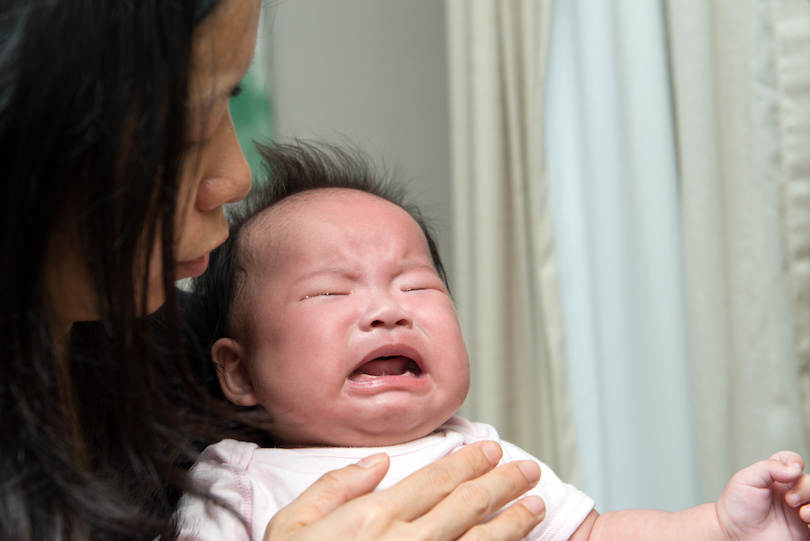How to help
When tiny babies cry a lot, it can be hard to tell what the trouble is. Gas pain is common—especially in the first few months of life. It will get better with time, but here are a few things you can do:
Check your feeding position
You want to limit the number of air bubbles that go into the tummy: Make sure that your baby has a good latch around the nipple—either the breast or the bottle—with no extra air coming in. As you bottle feed, tip the bottle so that the nipple is filled with milk. Either way, try to keep baby as upright as possible, so milk goes to the bottom of the stomach, and air to the top.
Get a good burp
Firmly pat or rub your baby’s back, both in the middle of every feeding (especially when baby takes a break) and again at the end. There are a few good ways to hold baby to burp, you can:
- Hold baby up to your shoulder and gently pat baby’s back.
- Sit baby on your lap, support the front of baby’s chin and chest with one hand and gently pat baby’s back with your other hand.
- Lay baby tummy down across your legs, support his/her chin and gently pat baby’s back. Always keep a burp rag or towel handy as baby may spit up a bit during burping sessions.
Watch what you eat
For breastfed babies, certain spicy foods, veggies or dairy foods can make matters worse. Click here for details.
Switch formulas
Talk with your pediatrician about trying out a formula with a different main ingredient (perhaps one without milk or soy) and see if it helps.
Work it out
Put baby on his or her back and rub the tummy in a clockwise motion. (Supervised “Tummy time,” or a few minutes resting on the stomach, can also work.) Try pedaling the legs around as if on a bicycle too.
Medications
Gas drops with an active ingredient of Simethicone can be found over-the-counter and can be very helpful when baby has tummy gas. If the above tips don’t work, this medication may help. Talk to your provider if you have questions.



